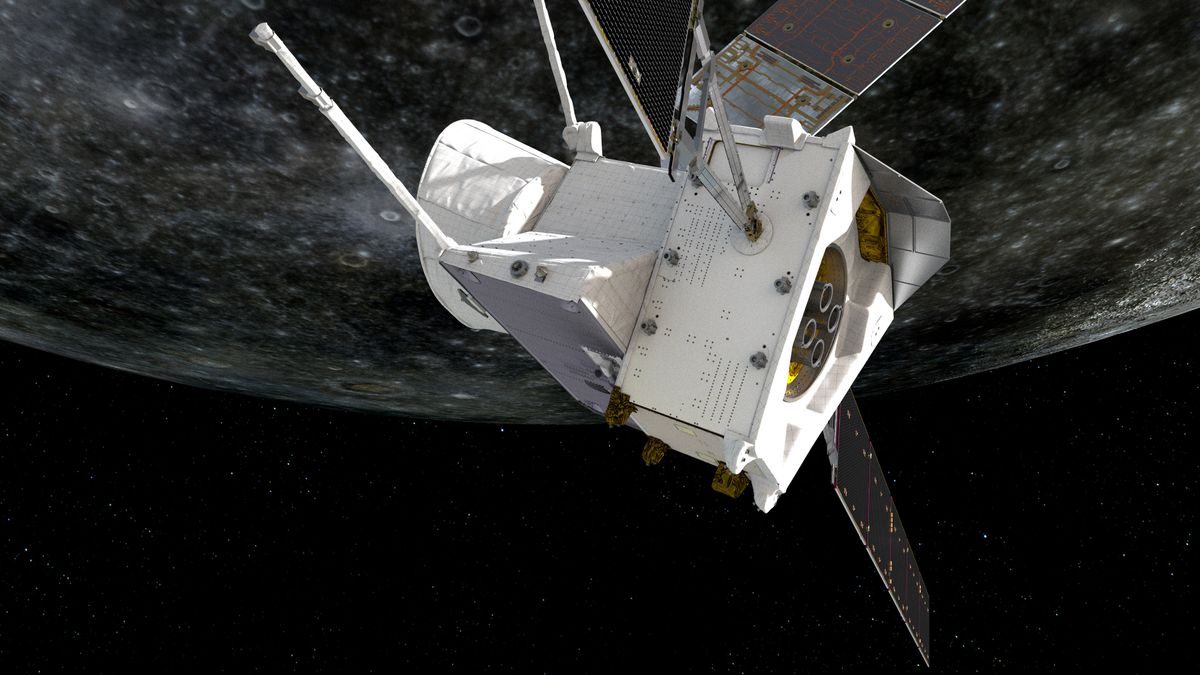
Passing within just 124 miles (200 kilometers) of the surface of Mercury, it sent back some spectacular pictures.
His groundbreaking work in this area earned him the title of the grandfather of the planetary fly-by technique, now more often termed a "swing-by.".
This will allow it to rendezvous with the planet for another swing-by on June 23 2022.
After a total of six Mercury swing-bys, the cumulative effect of the planet's gravity will reduce the spacecraft's velocity to the point where it can fall into orbit with Mercury around the end of 2025.During its cruise through interplanetary space, the European orbiter (called the Mercury Planetary Orbiter or MPO) is attached on one side to the interplanetary propulsion unit (or Mercury Transfer Module).
This stacked configuration obstructs the openings through which sophisticated visible, infrared and X-ray cameras inside MPO – capable of imaging and analysing Mercury’s surface in great detail – will operate once MPO finally becomes free-flying.Until a relatively late stage in mission planning, it was accepted that BepiColombo would be "flying blind" during its whole cruise from Earth, including during swing-bys – meaning no images would be available until orbit around Mercury had been achieved.These would snap planetary pictures during swing-bys.
It was decided to place these cameras on the Mercury Transfer Module, where they would also be able to monitor the deployment of the solar panels that provide the spacecraft with power, the magnetometer boom used for measuring magnetic fields, and the communication antennas.During BepiColombo's first Mercury swing-by, the fields of view of monitoring cameras two and three tracked across the planet.Once in orbit, BepiColombo's advanced payload of scientific instruments will help us understand more about how Mercury formed and what it’s made of!
